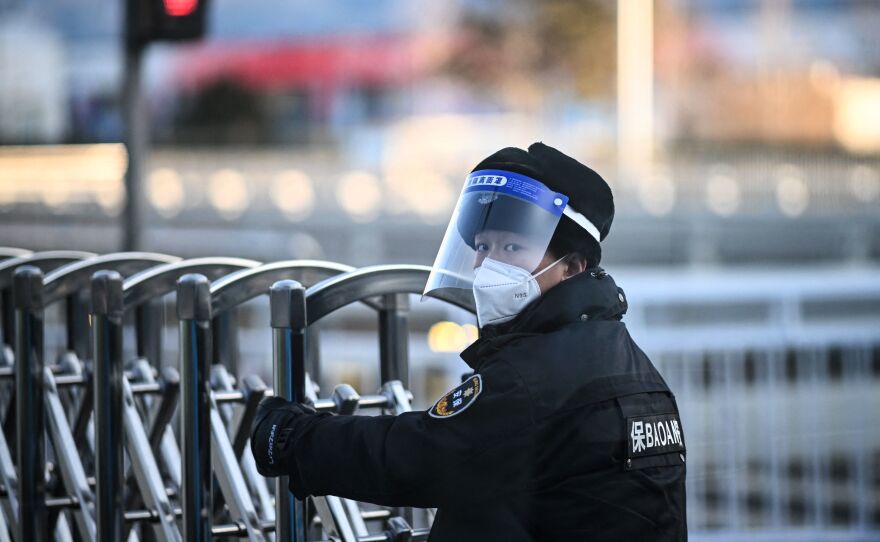BEIJING — Officials say there are 32 athletes in isolation facilities within the Olympics bubble after they tested positive for COVID-19. The athletes are spending an average of seven days in isolation, according to officials who spoke to the media on Tuesday.
Overall, the total number of confirmed cases in the bubble is on a downward trend, with Monday's rolling three-day average dropping by 50%, according to information from the Beijing Olympic committee.
Brian McCloskey, chairman of the Beijing 2022 medical expert panel, and other representatives said coronavirus cases are unlikely to arise from within the bubble. That's thanks to mask-wearing and participants being vaccinated.
"We are now seeing more people coming out of isolation than going into isolation. We know that people who had previous infections can be let out earlier because they are no longer infectious," he said. "We like that, but it does not mean we are comfortable because we can never be comfortable with coronavirus."
From Jan. 23 to Feb. 7, the IOC reported 393 positive coronavirus cases from tests taken at arrival at the Beijing Capital International Airport and from tests taken inside the closed loop of the Games.
Athletes in isolation have complained of serious problems with food, internet connections and access to training equipment — issues that officials say they have moved quickly to improve.
"Isolation is not good for anybody. Isolation may turn out to be one of the lasting damages that COVID has caused to people around the world," McCloskey said. "I understand the frustration, the stress, the disappointment that (athletes) feel after all the preparation."
He added, "In the meantime, we will do our best to look after those that are in isolation."
Figure skater Vincent Zhou is the most recent athlete from the U.S. to announce testing positive for COVID-19. His case meant the end of his 2022 Olympic campaign.
Belgian skeleton racer Kim Meylemans also tested positive for COVID-19 after arriving in Beijing. In a series of Instagram posts, Meylemans tearfully shared news of her situation, which later grabbed headlines.
Meylemans has said she previously tested positive for the coronavirus before getting to China. She said she had recovered before traveling and was able to show negative test results, which were required to enter Beijing.
She believes her positive results once in the bubble may actually stem from the highly-sensitive PCR tests detecting the virus antibodies. People who were infected with COVID-19 can continue to test positive for several days after they recover and are no longer infectious.
A false positive could be possible, McCloskey said. But there can also be cases where a person could be reinfected while in the Olympics bubble and therefore pose a risk to other participants.
"The challenge is distinguishing the two," he said.

A panel of other experts is working at the Olympics to review patterns of test results to determine the risk factor and the potential for a person who tested positive to actually be contagious, he said.
Sometimes that means officials are unable to clear an athlete before their competitions.
"Unfortunately, this is a very big and complicated system, but occasionally our approach has gone wrong. We know there have been instances where it hasn't gone as well as it should have done," he said. "But in general, people have an ability to get tested at the time of their choosing that fits their preparation for competition."
Olympics officials believe the closed-loop is still likely the safest place at the moment.
"I think your chance of picking up COVID in the closed loop is less than anywhere else in the world," McCloskey said.
Copyright 2022 NPR. To see more, visit https://www.npr.org. 9(MDAzMjM2NDYzMDEyMzc1Njk5NjAxNzY3OQ001))







